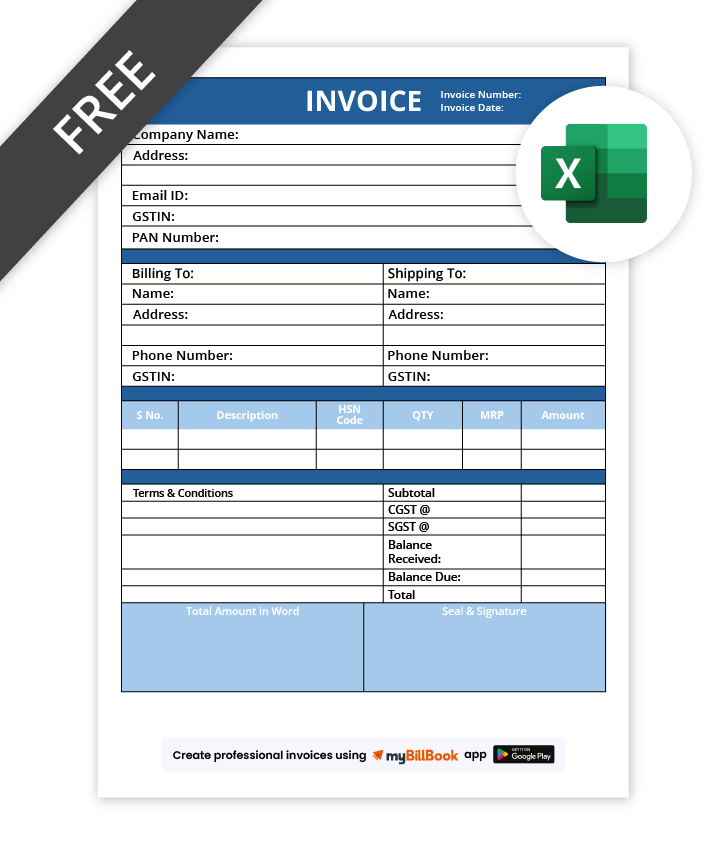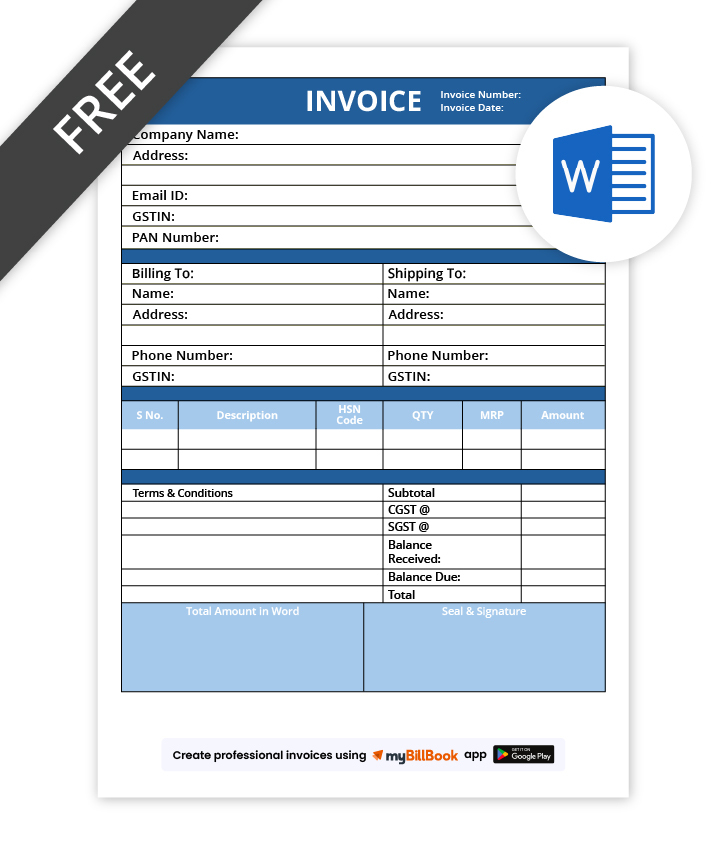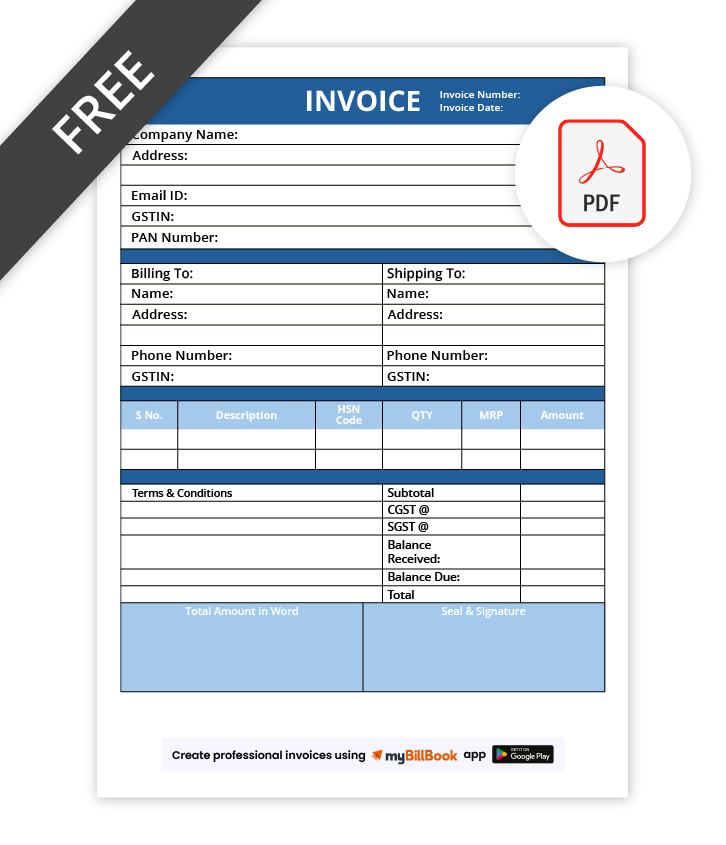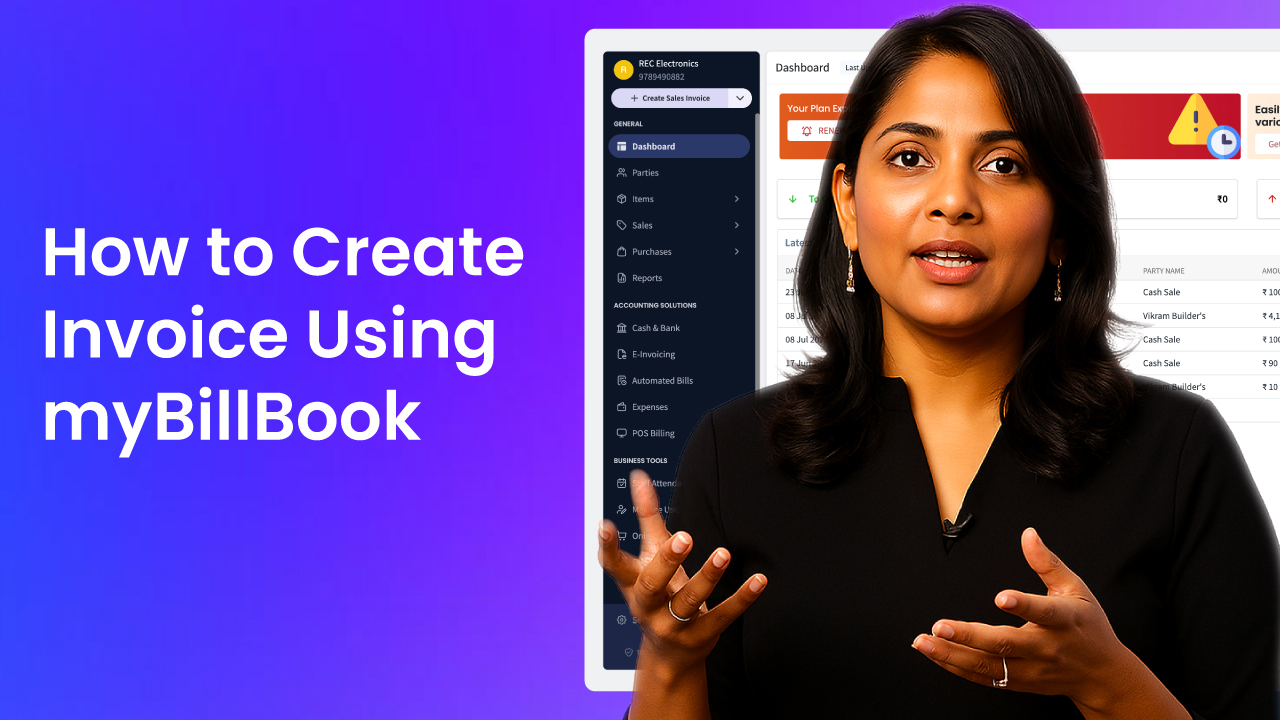Free Invoice Formats for All Your Billing Needs
Download free invoice formats in Excel, Word & PDF — simple, editable, and perfect for small businesses.
- Professionally designed invoice formats for all business needs
- Easy-to-edit templates across Excel, Word, and PDF
- Share invoices instantly via WhatsApp, Email, or Print
Powered by myBillBook - India's #1 Billing Software

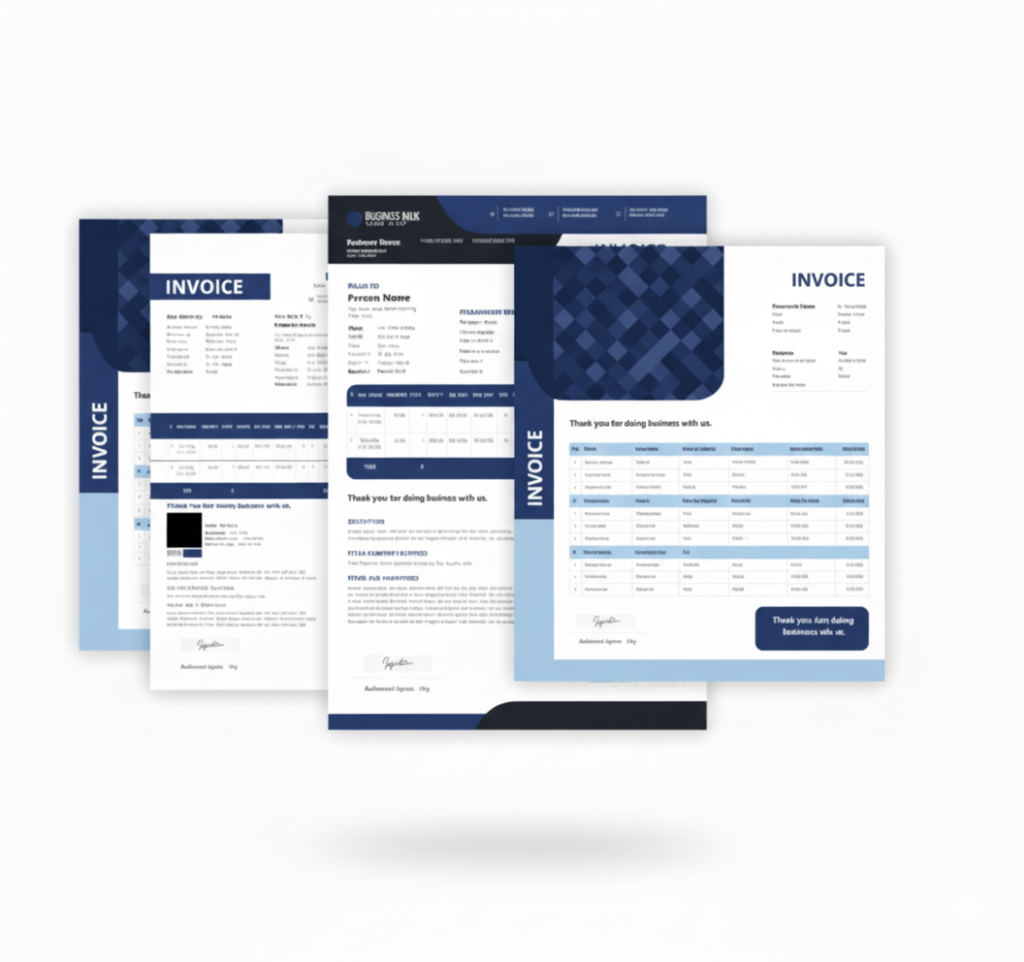
What Is an Invoice Format?
An invoice format is a ready-to-use template that helps you create bills without having to design anything from scratch. It includes all the basic fields needed for a proper invoice.
You fill in details like your business information, customer name, item list, quantities, amounts, and GST. The format neatly organises everything, making your bill look clear and professional.
As the structure is already set, you don’t miss essential elements like invoice numbers, dates, tax fields, or totals. This makes billing faster, easier, and more accurate for any small business.
Download Free Invoice Templates – Excel, Word, PDF
How to create an Invoice using our Free Invoice Templates
Want a Quick Professional Invoice?
Use myBillBook Invoice Generator to create invoices instantly. The billing app also provides –
Start Using myBillBook for Free
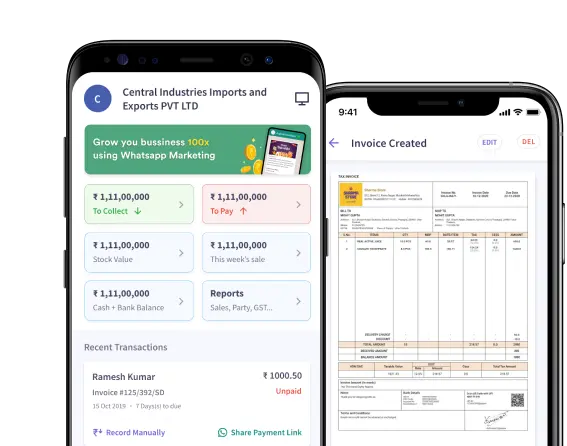
Why Using a Professional Invoice Format Matters
Free Invoice Templates in Different Formats
More Invoice Formats
Free Invoice Formats For Different Businesses
What Are the Essential Elements That Must Be Included in Every Invoice?
1. Business Details
Your business name, address, contact number, email, and GSTIN must be clearly shown.
2. Customer Information
Include customer name, address, GSTIN, and contact details for proper billing accuracy.
3. Invoice Number & Date
Add a unique invoice number and issue date for easy tracking and compliance.
4. Item Details
List items with quantity, rate, description, and applicable codes.
5. Tax Breakdown
Show percentages and amounts clearly for complete tax clarity.
6. Payment Summary
Display subtotal, total tax, discounts, and final payable amount in a clear format.
7. Payment Terms
Mention available payment methods, due date, and any late fee conditions clearly.
8. Additional Notes
Add optional notes like return policies, delivery details, or customer instructions.
Invoice Templates in Word, Excel, and PDF
An invoice template can be created using various online tools, such as Word, Excel, PDF, Google Docs, and Google Sheets.
Invoice Format in Word
Creating an invoice format in Word is one of the easiest methods. The invoice format in Word is best for small and medium-sized enterprises as it is an affordable and easy-to-use tool. Anyone with a basic knowledge of using Word can use the software to create an invoice template of their choice.
Invoice format in Excel
The Excel invoice format is another great way to create invoice templates. Excel has an extra feature compared to Word, as it allows the insertion of formulas to auto-populate data. This feature makes invoice formats in Excel a better alternative for accurate billing.
Invoice format in PDF
A secure alternative for invoice creation is using invoices in PDF format. The invoices generated in PDF cannot be edited further, so they are secure. In addition, PDF invoice formats look professional so that users can share them directly with customers.
Invoice format in Google Docs
Creating invoices in Google Docs is almost similar to creating invoices in a Word document. While MS Word is a paid resource, Google Docs is an open-source available to everyone having a Google account. So, if you don’t have a subscription to Word, you can use Google Docs as an equal alternative. To create an invoice format in Google Docs, follow the similar process used for creating an invoice format in MS Word. For basic invoicing knowledge, refer to what is invoicing.
Invoice format in Google Sheets
Creating invoices in Google Sheets is almost similar to creating invoices in Excel Sheets. While MS Excel is a paid resource, Google Sheets is an open-source available to everyone having a Google account. If you don’t have a subscription to Excel, you can use Google Sheets as an equal alternative. To create an invoice format in Google Sheets, follow the similar process used for creating an invoice format in Excel.
Frequently Asked Questions
What is the standard invoice format for small businesses?
A standard invoice includes business details, customer information, invoice number, dates, item list, tax breakup, totals, and payment terms, ensuring accuracy, compliance, clarity, and easy record-keeping for small businesses across different industries.
How can I ensure my invoice format is legally compliant?
To stay compliant, include GSTIN, invoice number, invoice date, HSN or SAC codes, tax percentages, customer details, and payment terms. Following these requirements keeps your invoices aligned with GST rules and avoids penalties.
Why is it crucial to clearly state tax information in the invoice format?
Mentioning CGST, SGST, or IGST clearly ensures transparency, prevents misunderstandings, supports accurate calculations, and keeps your invoices compliant with GST regulations, helping customers understand charges and businesses maintain clean records.
What payment terms should I include in my invoice format?
Include due date, accepted payment methods, late fee conditions, advance requirements, and any special instructions. Clear payment terms help customers understand expectations, avoid confusion, and ensure timely payments for your business.
Why should I use an invoice numbering system in my format?
A structured numbering system prevents duplication, supports easy tracking, simplifies audits, organizes financial records, and ensures every invoice can be referenced quickly whenever needed, improving overall efficiency and accounting accuracy.
Why is a consistent invoice format important for business branding and record-keeping?
Consistency creates a professional appearance, strengthens brand identity, reduces mistakes, and keeps records organized. A uniform layout also helps customers understand invoices easily, improving clarity, trust, and reliability during business transactions.
Why does a good invoice format help with faster payments?
A clear invoice format shows totals, due dates, taxes, and payment instructions without confusion. When customers instantly understand charges, they pay faster, reducing delays and improving cash flow significantly for your business.
How do I customize an invoice template for my specific business needs?
You can edit colors, add logos, adjust columns, change tax fields, and modify layouts. For simpler customization, myBillBook offers ready themes, helping businesses create clean, branded invoices effortlessly within minutes.
Where can I get a custom invoice format designed for my brand?
You may hire a designer or use billing software that supports branding. myBillBook offers customizable themes, allowing logo placement, color changes, and professional layouts suited to your business identity effortlessly.
Where can I find free invoice format templates for different industries?
Several online resources offer industry-specific templates. For reliable, GST-ready options, myBillBook provides free invoice formats for retail, wholesalers, pharmacies, service businesses, and more, making billing easier for different sectors.
Where to download invoice formats for Google Docs or Microsoft Excel?
You can download editable templates from online libraries that provide Excel, Word, and Google Docs formats. These files can be customized easily for different business types and GST requirements.
How to convert an invoice format from Word to PDF?
Open your document, select “Save As,” choose PDF, and export. Alternatively, use print-to-PDF options available on most devices, ensuring your invoice is share-ready and maintains proper formatting across platforms.
Who benefits from a clear and well-structured invoice format?
Retailers, wholesalers, freelancers, service providers, manufacturers, distributors, and small businesses benefit from a clear format, as it improves communication, reduces errors, accelerates payments, and keeps financial records consistent.

